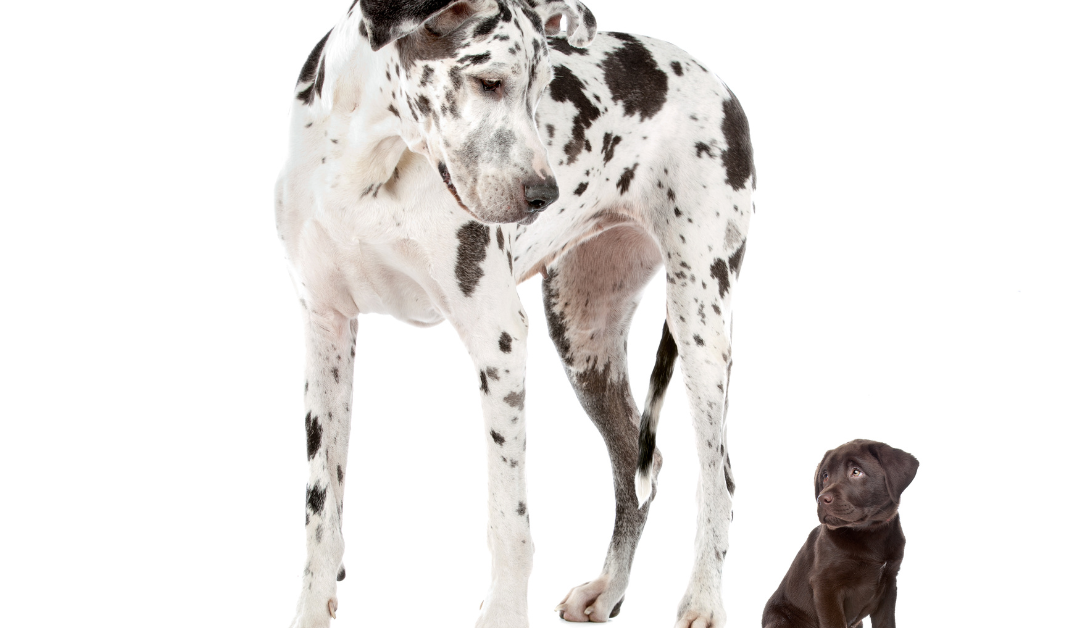Post shared courtesy of Sunshine Pet Waste Removal
Not all puppies grow to be the same size, and it’s important to know what to expect before bringing a new furry friend home. It can be challenging to determine how big your dog will eventually grow, especially if you don’t know the breed or have a mixed-breed dog. But, estimating your dog’s adult size is helpful for proper training, feeding, exercise, and healthcare. Understanding how to estimate your dog’s size can also help you make informed decisions when selecting a dog breed that fits your lifestyle and space. Whether you are a new dog owner or considering adopting a new pup, keep reading to learn more about how to predict your dog’s future size.
Consult your dog’s breed standard for an estimate of their adult size
When trying to determine how big your dog will get, consulting your dog’s breed standard can be an informative starting point. A breed standard is a detailed description of physical characteristics and traits associated with a specific breed. These standards are created by breed clubs and organizations to maintain breed characteristics and conformation. They often include information such as a breed’s height, weight, and general appearance. By reviewing your dog’s breed standard, you can estimate their adult size and ensure that they are developing according to the guidelines set forth for their breed. However, it’s important to keep in mind that genetics and other factors may influence a dog’s final size and weight, so breed standards may not always provide a completely accurate prediction.
Observe your dog’s growth rate and compare it to breed average
Another way to predict your dog’s future size is to observe their growth rate and compare it to the average growth rate for their breed. To do this, collect growth data such as weight and height measurements over several developmental stages and compare it to the breed’s standard growth rate. This approach can provide a helpful ballpark estimate of your dog’s final size, while also helping to identify any health concerns that may arise as your dog grows.

Image credit:Liliya Kulianionak from Getty Images
Consider the size of your dog’s parents and siblings
When trying to predict your dog’s future size, one important factor to consider is the size of their parents and siblings. This can give you a general idea of the size range your dog may fall into. For example, if both parents are of small breed size, it’s likely that their offspring will also be small. Similarly, if the siblings of your puppy are all bigger in size, it’s possible that your dog will eventually grow to be larger as well.

Image credit: Damedeeso
Take your dog to the vet for a physical examination and growth assessment
Taking your dog to a veterinarian for a physical examination and growth assessment can be an important step in determining how big your dog might get. The veterinarian will analyze your dog’s skeletal structure and body composition, as well as any relevant medical history, to make a projection of the dog’s ultimate size. This also allows the vet to identify and address any potential health concerns that may affect your dog’s size or growth. During the examination, the veterinarian may also discuss genetic factors, such as breed characteristics and familial size trends, to provide further insight into your dog’s growth potential.
Predicting the size of your pup can be a fun and interesting process that requires observation, research, and understanding of its breed’s characteristics. While there are no crystal balls for figuring out a dog’s final size, using various methods such as height, weight, breed size standards, growth charts, genetics, nutrition, and exercise can give you an estimate of how large your furry friend might grow. Keep in mind, however, that every dog is unique and may not fit perfectly into these guidelines. Regardless of size, your dog’s love, loyalty, and playful spirit will always make it the perfect size for your heart.


